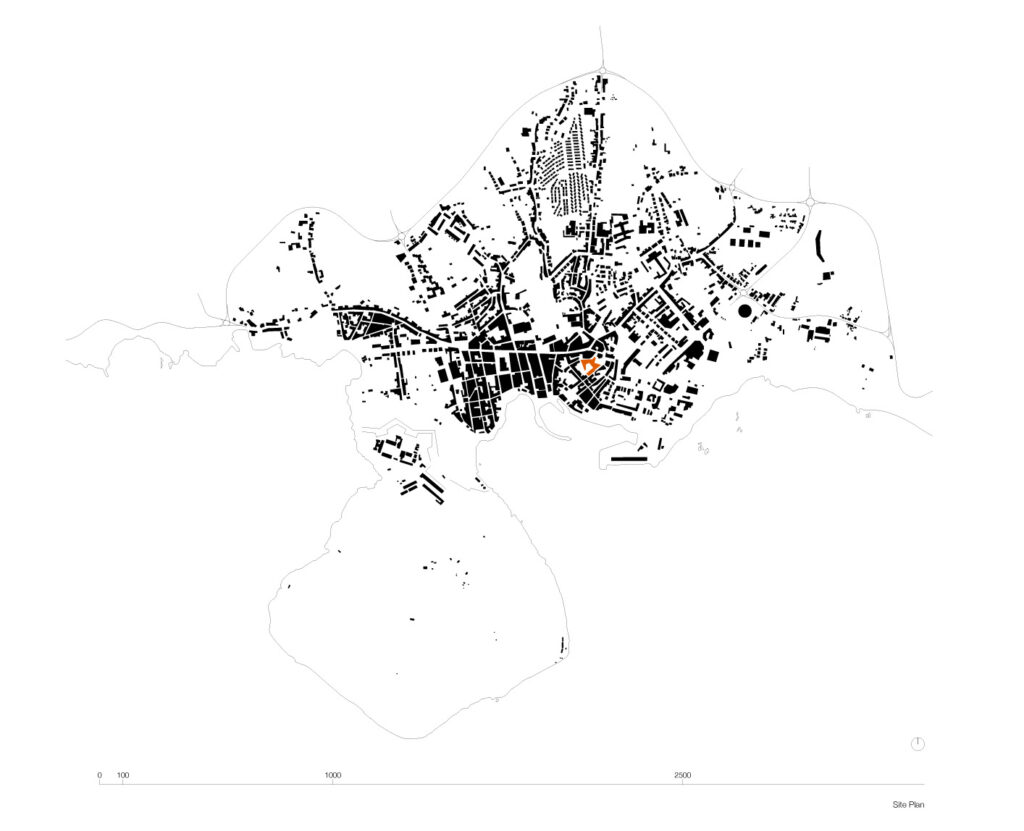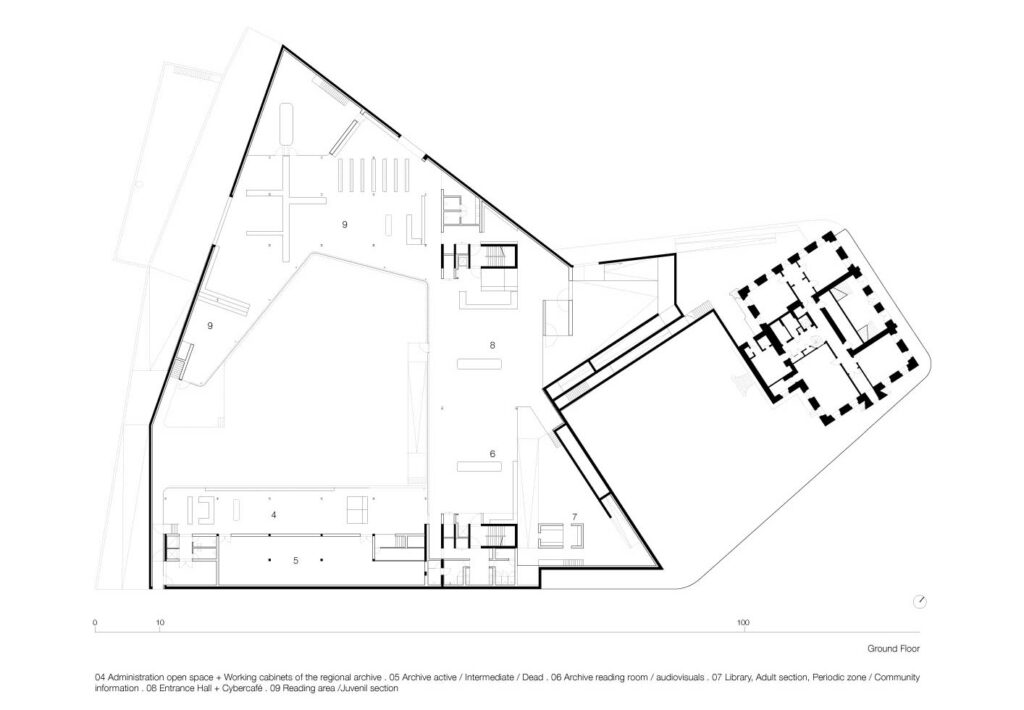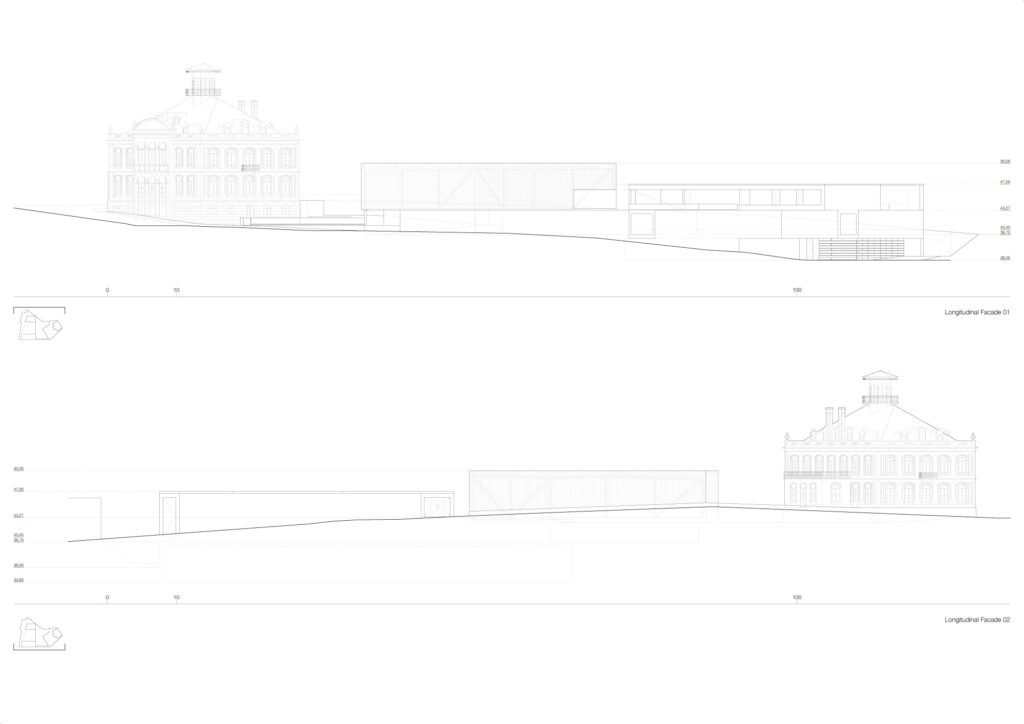Another example of respectful work in historic context by Lisbon architect Inês Lobo, Jury member of the BigMat ’21 International Architectural Award, the Luís da Silva Ribeiro Public Library is located in an annex of the Silveira e Paulo Palace in Angra do Heroismo, Azores. Its clear design and beautiful working spaces received critical acclaim.
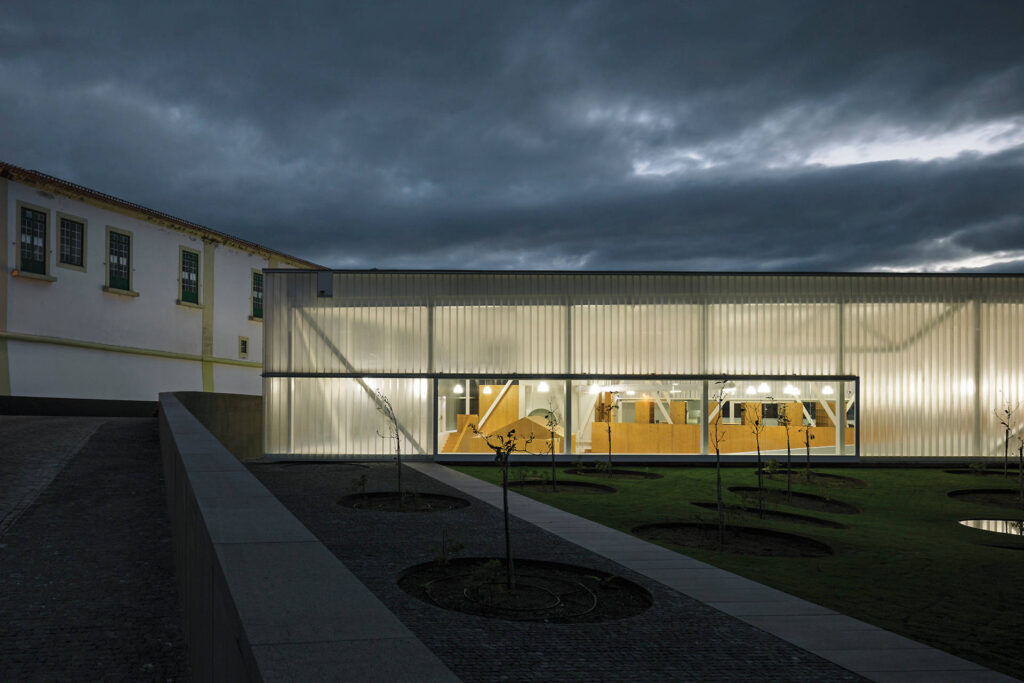
Description by the architect. The Public Library and Regional Archive of Angra do Heroísmo sits in the ancient urban fabric of the city, in an annex of the palazzo Silveira e Paulo. The palazzo and its gardens are striking elements of the city, given their singularity, position and dimension within it’s tight urban fabric.
Public Library and Archive Luís da Silva Ribeiro by Inês Lobo Arquitectos
Angra do Heroismo, Azores, PT
Architect: Inês Lobo with João Vaz, João Rosário, Gilberto Reis, Pedro Oliveira, Júlia Varela, Sérgio Pereira, Rafael Marques, Filipe Soares, Pedro Coelho, Domingos Domingues
Location: Angra do Heroismo, Azores, Portugal.
Year: 2006 – 2016
Gross floor area: 8.898 m2
Structures: ADF Engenheiros
Consultores: Pedro Morujão, Rodrigo Castro
Heating, Ventilation, Building Physics, Thermic and Acoustics: NaturalWorks; Guilherme Carrilho da Graça and José Galvão Teles, engenheiros, lda
Landscape Architecture: Global Arquitectura Paisagista Lda, João Gomes da Silva
Photographer: Leonardo Finotti
Given the size of the programme the project tried to respond with a building that would generate, consolidate and articulate public spaces and pathways in the urban structure.
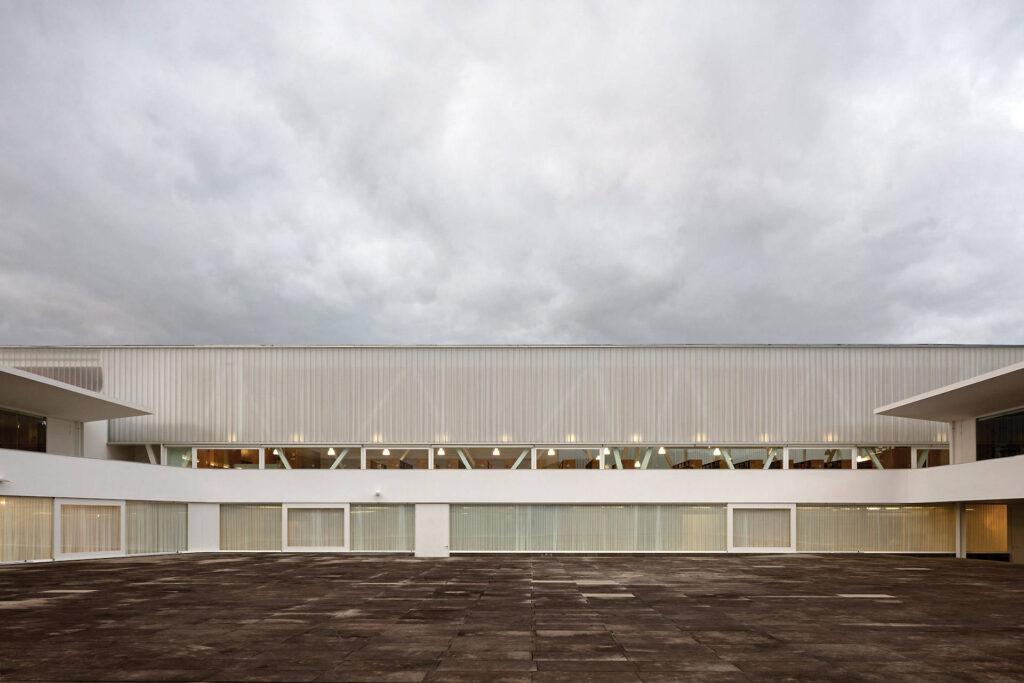
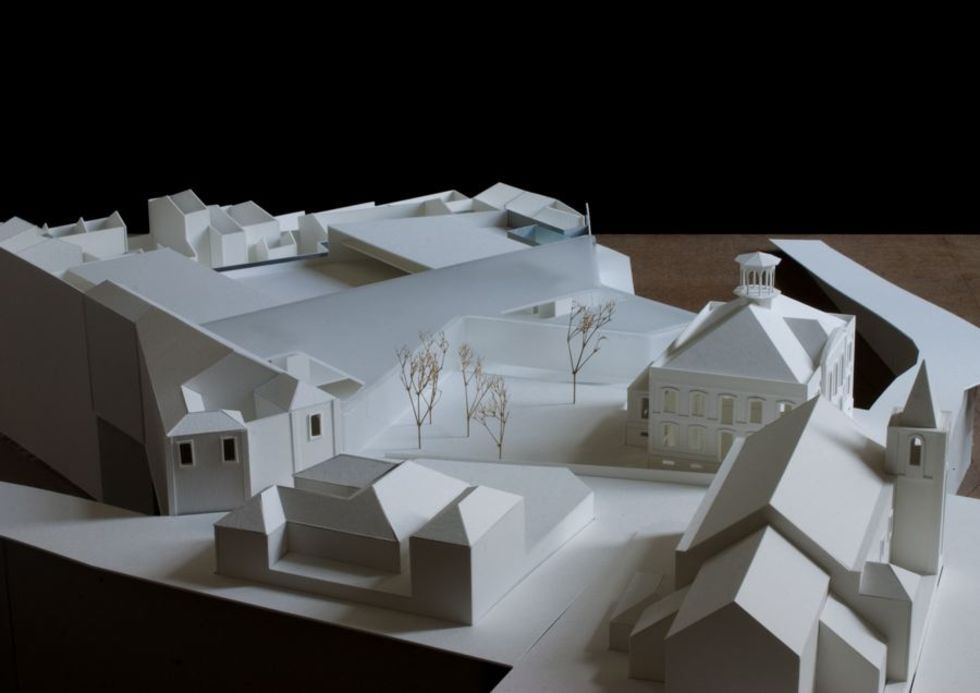
So, it isn’t the programme and a quest for a given form for the building but the form of open spaces it generates that actually commanded its design.
TWO CORPS, TWO VOIDS
The new building is made of to superimposed bodys that create two outdoor spaces: to the North and to the South of the plot. The first one, “u” shaped, creating a terrace; to second, above, draws the limit of the Pallazo’s garden.


COVER
A fundamental part in the building’s design, it consolidates and creates near and far relations with the territory. A the terrain level, it’s the boundary of the contiguous public spaces, alongside pathways. To the city, it creates a reference line, above which stand the notable buildings and green spaces that surround them.
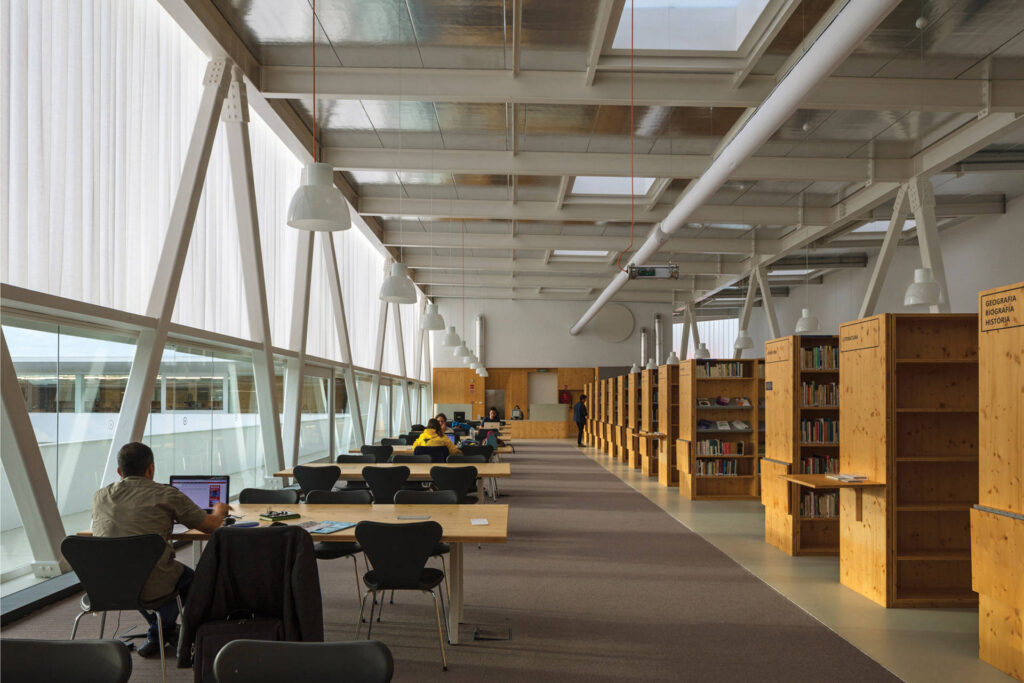
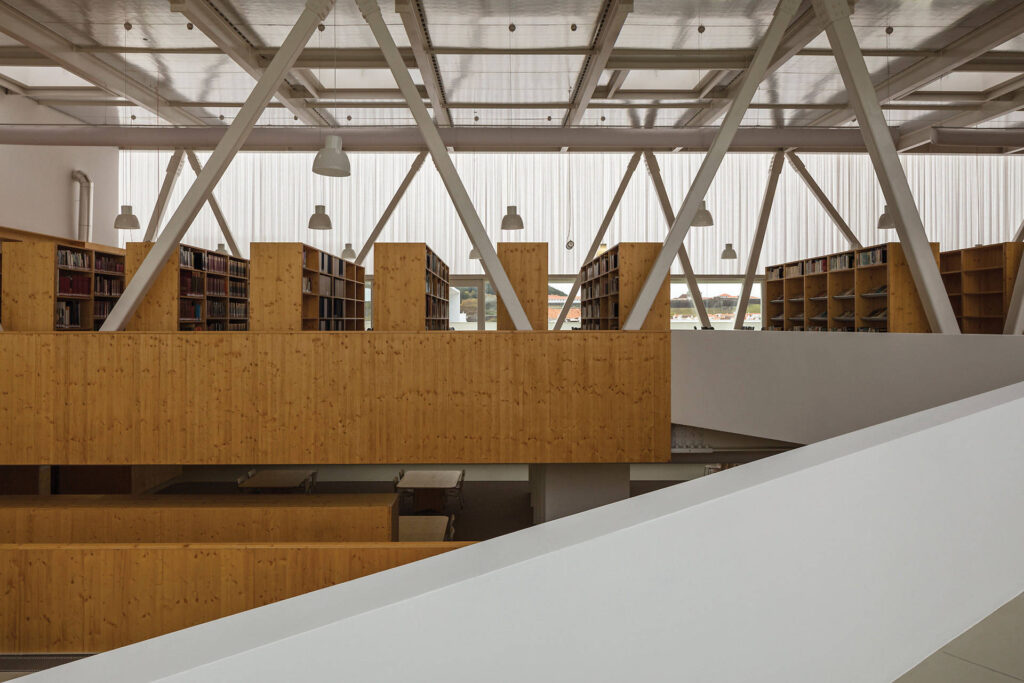
Read as a wall from the garden or as a space from the Library’s reading room, this body’s shape is unreadable as a whole, but draw clear and regular outside spaces.
The lining, a uniform and bright surface, in U-Glass and glass, gives it a clear and delicate image.
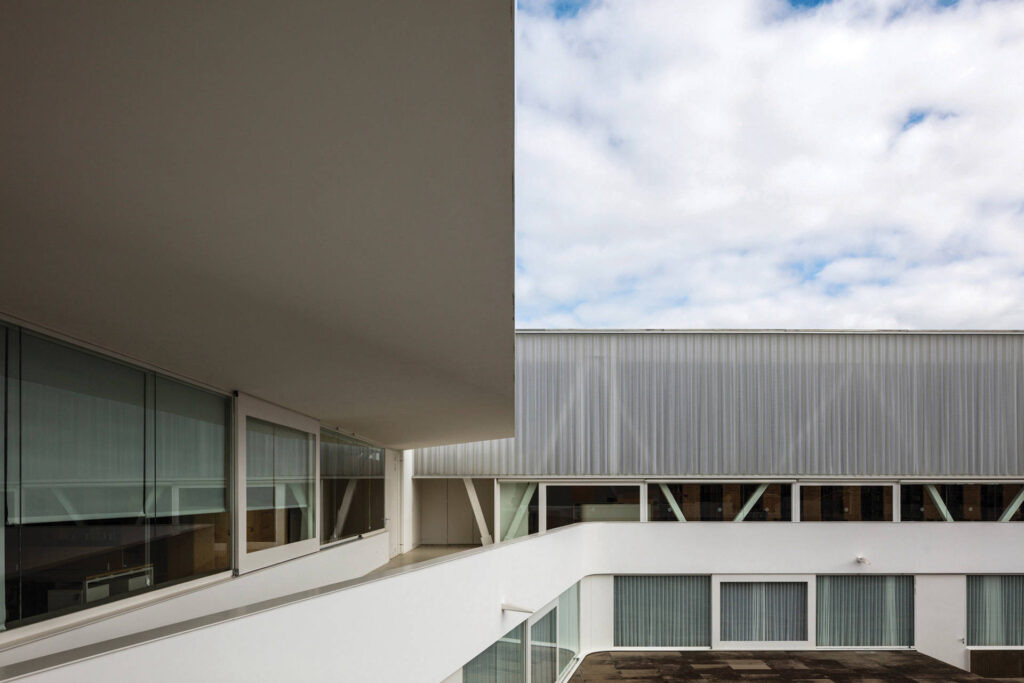
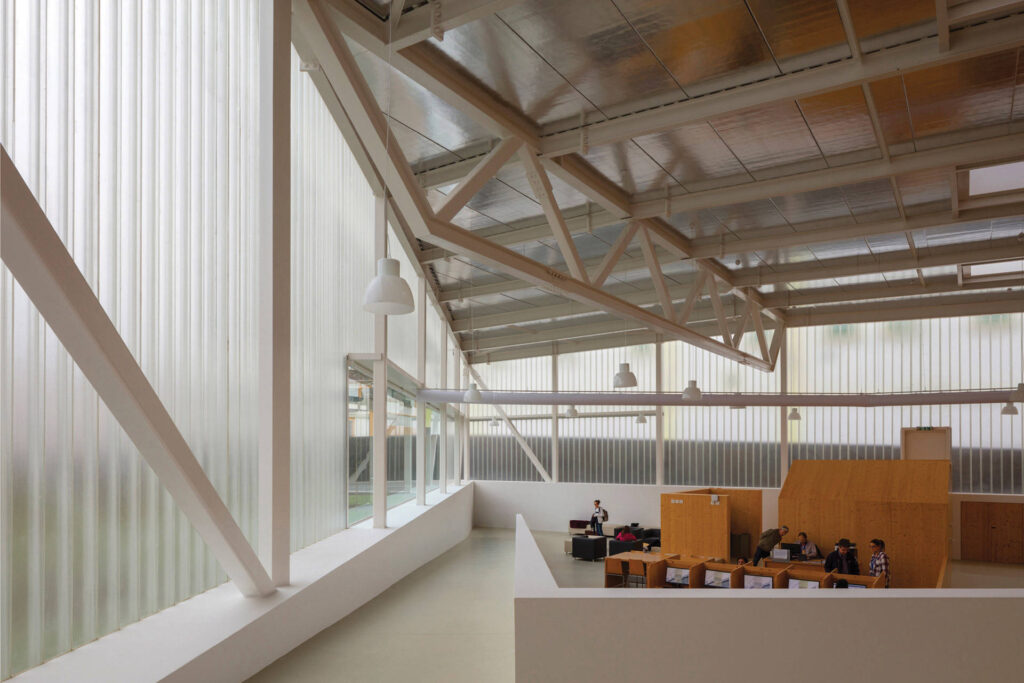
TERRACE
The cover stands above a concrete body wrapped around a terrace. The outside perimeter is painted white as the walls of the near surroundings and volume opens to the terrace, providing a visual relationship between all the inclosed and open spaces, public or reserved.

Public Library and Archive Luís da Silva Ribeiro, Angra do Heroismo, Azores, Inês Lobo Arquitectos © Leonardo Finotti 
Public Library and Archive Luís da Silva Ribeiro, Angra do Heroismo, Azores, Inês Lobo Arquitectos © Leonardo Finotti
FURNITURE
Since the spatial design of the building relies on visual and physical continuity, furniture gains visibility and an important role in the functional definition of spaces. Even if the design seeks uniformity, the use of different materials, by similarity or contrast to those of the building, sets the desired standard of comfort of each space.
